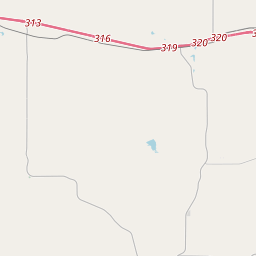First Baptist Church of Cisco







The Rev. C.G. Stephens, founder of Red Gap Community (1 mi. W), joined the Rev. W.B. Cobb in 1878 to organize the Red Gap Baptist Church. Forerunner of the First Baptist Church of Cisco, The Red Gap congregation had 13 charter members who met in a one-room log schoolhouse. This small membership organized seven churches into the Red Gap Baptist Association. The junction of the Texas & Pacific Railroad and the Houston & Texas Central Railroad established Cisco and began the demise of Red Gap. The congregation moved to Cisco in 1881 and built a church house at 10th and Avenue E. The next year they constructed a 36' x 50' building at this site. A deadly tornado in 1893 totally destroyed the building. A new structure, completed the following year, burned in 1924. The collapse of an earlier oil boom, which had brought rapid growth to Cisco and the church, caused financial losses. The congregation met in Cisco City Hall and schoolhouses until a new structure could be completed. This fellowship started a mission at Liberty Hill (4 mi. NW) and a Spanish language mission in northeast Cisco. Former pastors of this church have become presidents of Baptist colleges, missionaries, evangelists and special service ministers. (1978)
As one of the most visible programs of the Texas Historical Commission (THC), historical markers commemorate diverse topics in Texas history, including: the history and architecture of houses, commercial and public buildings, religious congregations, and military sites; events that changed the course of local and state history; and individuals who have made lasting contributions to the state, community organizations, and businesses.
Texas is known for its barbecue, and one of the most famous barbecue restaurants in the state is Kreuz Market in Lockhart. The restaurant has been in operation since 1900 and is still family-owned.
The county's official establishment came in 1858, when Texas Legislature recognized it as a separate entity. The county was named after William M. Eastland, who fought in the Texan Revolution and served as a Texas Ranger. During the late 19th and early 20th centuries, Eastland County experienced significant growth and development thanks to the arrival of railroads, making it a crucial transportation hub for the surrounding regions.
The discovery of oil in the early 20th century also brought prosperity to Eastland County. The oil boom led to a population increase, as well as the growth of industrial and commercial sectors. However, the Great Depression of the 1930s had a devastating impact on the county, leading to a decline in population and economic activity.
In recent decades, Eastland County has worked to revive its economy and preserve its rich heritage. Today, the county is known for its thriving agricultural sector, including cattle farming and crop cultivation. The county also attracts tourists with its natural beauty, offering outdoor recreational activities such as fishing, hunting, and camping. Eastland County continues to embrace its history while looking towards a promising future.
Eastland County Timeline
This timeline provides a concise overview of the key events in the history of Eastland County, Texas.
- 1850 - Eastland County is established as a county in Texas.
- 1854 - The town of Palo Pinto is designated as the county seat.
- 1858 - Palo Pinto is abandoned, and the county seat is moved to Merriman.
- 1875 - Merriman loses the county seat status to Eastland.
- 1890 - The Texas Central Railroad arrives in Eastland, fueling growth and economic development.
- 1907 - The first oil well in Eastland County is drilled, leading to the rise of the oil industry in the area.
- 1920 - The Eastland City Dam is built, creating Lake Leon and providing a water source for the region.
- 1930 - The population of Eastland County reaches its peak, with over 30,000 residents.
- 1938 - Eastland County is severely affected by the devastating tornado outbreak known as the "Wichita Falls–East Texas Tornado Outbreak."
- 1950s - The decline of the oil industry and changes in agriculture lead to a population decrease in Eastland County.
- Today, Eastland County is a rural area with a diverse economy, including agriculture, oil and gas production, and tourism.